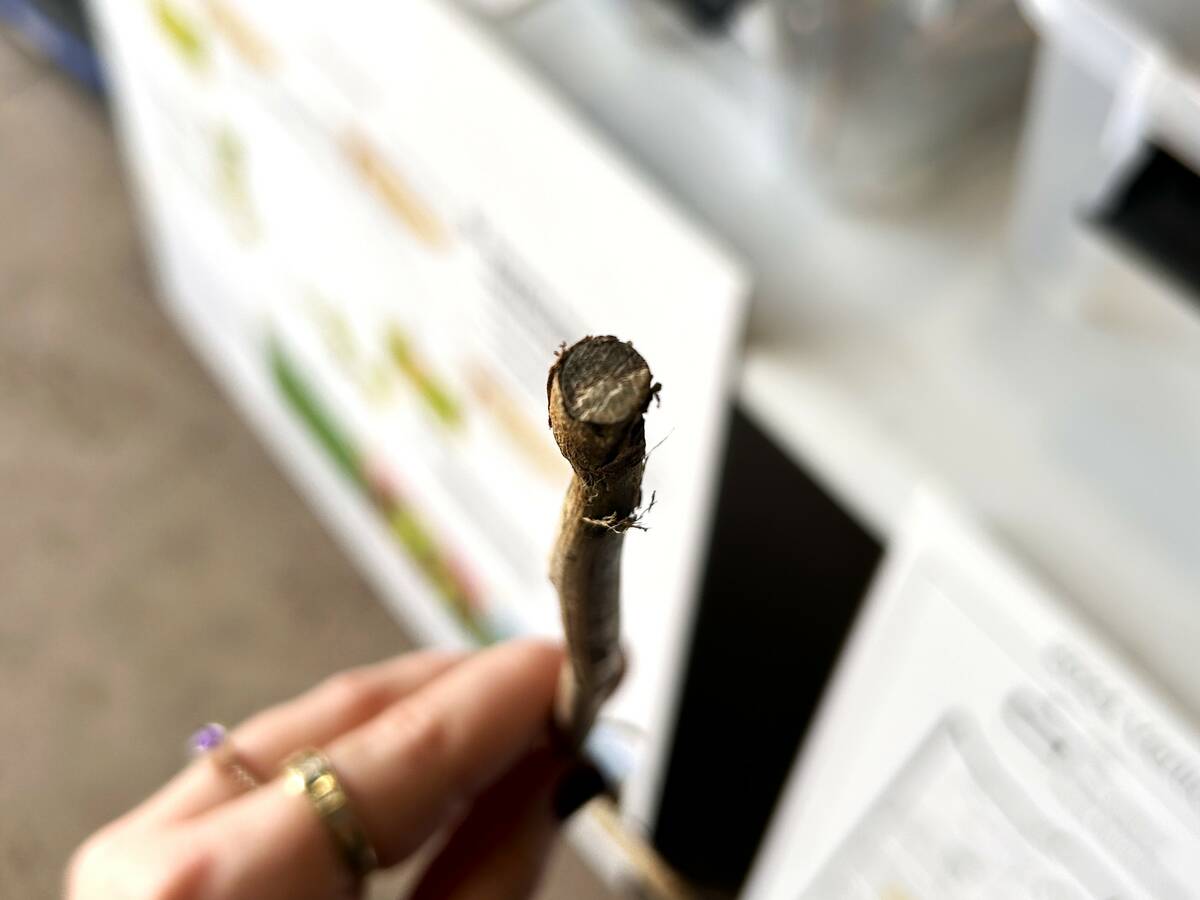With late blight infections on the rise in Manitoba potato fields this fall, home gardeners should be vigilant so as not to be a source of infection next year, says Vikram Bisht, Manitoba Agriculture, Foods and Rural Development’s potato and horticultural crops plant pathologist.
The first case of late blight this season was confirmed Sept. 11 in a commercial potato field in the Carberry area. A second case was found soon after about a mile away.
Last week, a third infection was found in the Carberry area, plus 2 more fields in the Graysville area, and one infection in tomatoes in the Portage la Prairie area, Bisht said in an interview Sept. 18.
Read Also

Manitoba canola embattled by verticillium
Verticillium stripe pressure has been growing in Manitoba, and canola farmers still have precious few tools to protect their crop from the disease.
“It (late blight) won’t survive our Manitoba weather if it is frozen, but in the compost pile sometimes it survives and they (potato tubers) sprout in the spring,” he said. “With tomatoes, in most cases it will just rot away because there is so much liquid.”
Suspect infections
Bisht wants to hear from gardeners who suspect they have late blight in their tomatoes or potatoes. Photograph suspected infections and email them to [email protected]. Samples can also be taken to the MAFRD GO office, 65 3rd Ave. NE, Carman, Man.
Infected tomatoes can spread to a gardener’s potatoes. If infected potatoes are stored and then planted next spring they could be a disease source, Bisht warns.
To avoid that, gardeners should be aware if they have the disease this fall. If so, they should destroy infected potato and tomato plants. Don’t put them in a compost pile where they might not freeze. If infected plants are worked up, then rot and freeze over the winter they will no longer pose a threat.
Gardeners should buy new certified seed potatoes next spring and plant healthy-looking tomatoes.
Infected volunteer potatoes could be a disease source and should be destroyed. Volunteer tomatoes come from seed, which doesn’t harbour the disease.
When late blight strikes a garden earlier in the growing season, Bisht recommends destroying infected plants by placing them in black garage bags and leaving them in the sun. Extreme heat will destroy the disease. Burning infected plants is impractical because of the high moisture content.
Late arrival
The good news is late blight arrived in Manitoba late. Home tomato and potato production is wrapping up, while commercial potato growers are well into harvest. Still, potato farmers need to be vigilant. Some farmers delay harvest to maximize yield. So long as the crop is growing it’s susceptible to late blight infection, Bisht said.
“Scouting is critical now, mainly in wind-sheltered areas and the dips in field where the foliage is greener,” Bisht wrote in a recent report. “Especially for fields which have a few more weeks to harvest, fungicide application to protect the crops is very important. Systemic (translaminar) fungicides could be considered. Dew and rains could take the (disease) spores to tubers close to the surface.”
Potatoes infected with late blight now could rot in storage, Bisht said. Late blight doesn’t rot potatoes, but the damage it causes allows other infections that cause rot to develop.
Treating potatoes with phosphorus acid (Phostrol, Rampart and Confine) as they are placed in storage can protect them from rot, Bisht said.
“Growers need to be scouting and make sure when tubers are going into storage it will help to have a post-harvest application of phosphorus acid fungicide,” he said.
Bisht suspects late blight was delivered by a thunderstorm that hit the Carberry area Sept. 4
“I can say that because the infection is mostly the top of the leaves scattered in a field rather than a big circle or patch within the field,” he said. “If it’s a big patch of disease then you can speculate that it started in that area, but when it’s a few spots here and there then it’s an indication that it came from outside.”
Correction: The number of late blight infections found in the Graysville area — two — was corrected Sept. 23.
















